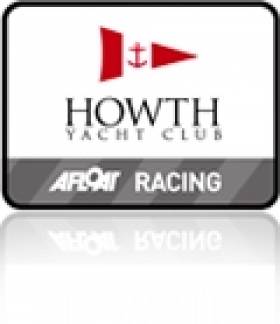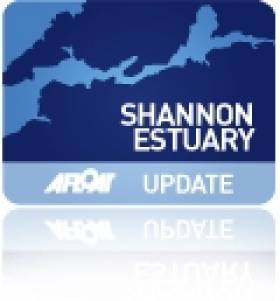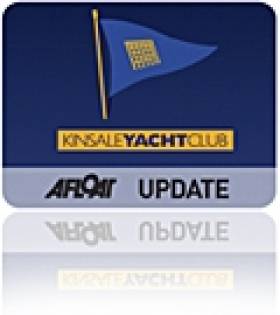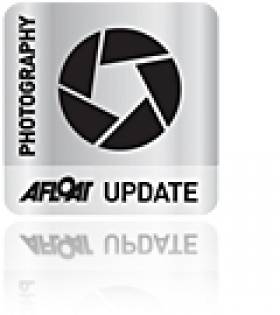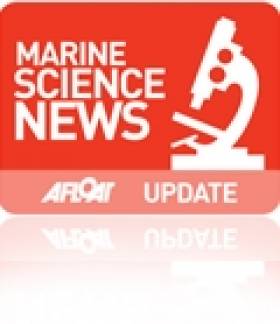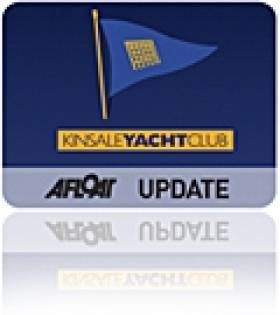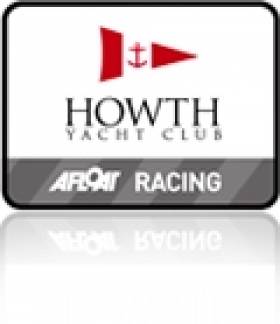Displaying items by tag: yacht
Navies Northern Adventure Head for 'Foyle Days'
On the naval front, LE Emer was built in Cork's Verolme Dockyard in 1978. She represents the oldest of the eight-strong fleet and is designed from the Naval Service's first purpose built patrol vessel OPV LE Deirdre (P20) but was modified to improve her stability and speed. This vessel was decommissioned several years ago and was converted into a private yacht.
The original BOFORS 40mm L60 gun of the LE Emer was recently upgraded to a BOFORS 40mm L70 to improve range and accuracy of her main armament. She alongside her 65m sisters LE Aoife (P22) and LE Aisling (P23) where all built primarily to patrol the Irish section of the European Economic Zone (EEZ).
During their careers the 'Emer' class vessels have also completed numerous re-supply missions to Irish troops serving overseas with the United Nations and in particular in the Lebanon. A crew compliment of 46 (5 officers) operate the vessels which are all now in their fourth decade of service.
OPV HMS Severn is the third of four 'River' class offshore patrol vessels and like her Irish counterpart is deployed on fishery duties. The 1,677 displacement tonnes vessel was built in 2001 in the UK'S south coast port of Southampton at Woolston Docks. Her home port for the 30 crew is at HM Naval Base in neighbouring Portsmouth.
She becomes the fifth ship to bear the name and with sisters HMS Mersey (P 282) and HMS Tyne (P 281) they are assigned to the Fishery Protection Squadron. Click the ship's diary to follow the ship news. The final member of the River class HMS Clyde (P 257) serves as a Falklands Islands Patrol Vessel (FIPV).
- yacht
- Clipper Round The World Race
- naval service
- Derry
- Royal Navy
- Londonderry
- Ports and Shipping News
- JOHANNA LUCRETIA
- Verolme Cork Dockyard
- United Nations
- Foyle Days
- Offshore Patrol Vessel
- Maritime Festivals
- LE Emer
- Emerclass
- LE Deirdre
- HMS Mersey
- Riverclass
- Schooner
- HM Naval Base Portsmouth
- Falklands Islands
Aura Tops the Seventeens in Howth
Foynes Flotilla Sails into Riverfest
A north-easterly force 3 wind accompanied the flotilla of yachts that set out from Foynes Yacht Club, who sailed to Limerick city on Saturday afternoon to participate in the Riverfest celebrations.
Daniel Butler co-ordinator took members of the Northside We're Ok youth group from Moyross, who experienced another view of Limerick from the river. John Prendergast and his wife, Maureen, were guests of the club on this cruise.
The yacht's that journeyed were Mweeloon, Whyte Dolphin, Alphara, Inizi, Mariposa, Lady Shanannah, Hello, Kilteery, Kerry Dream, Battle, Dexterity, Coral Dos and Blue Ribbon. Unfortunately, Marengo had to turn back at Aughinish because of engine trouble, the skipper, Pat Finucane and crew changed boats and were transported on on Ger Reidy's, Kilteery.
The sun shone all the way for the sight-seeing journey up this magnificent of stretch of water. The Islands on the Shannon Estuary Cannon and Horseshoe are one of the first sights that can be seen on this stretch of the river. The bauxite smelting factory, Aughinish Alumina and the famous Beeves Rock lighthouse, no more in use gives an added pictureesque setting to this journey.
Further on the right-hand side the entrance into the Deel Boat Club in Askeaton can be seen on the the same shore the pre-Norman Beagh Castle is standing overlooking the Shannon. Ringmoylan, and Pallaskenry can be seen down a mile from the castle, and opposite Rineanna with the famous Shannon Airport, who hosted several US President's who stopped off to visit this country.
As we continued our journey up river the landmark, Carrigagonnell Castle is visible, also the giant chimneys of the Cement factory in Mungret and the giant-sized structure of Thomond Park.
Nearer to the city Riverpoint and the Clarion Hotel, two of the tallest buildings in Limerick, rise up to the blue sky and sunshine of May.
When the flotilla approached the Clarion Hotel, they berthed for an hour to give the public a chance to see these water vessels in their bunting and memorabilia.
After the inspections were it was into Limerick Docks for an overnight stay, and then on to Dolan's Bar and Restaurant for a much sought-after meal.
On Sunday afternoon the junior members of the club, Ailish Chawke, Claire Lowes, Ciara McCormack, Mary McCormack and Anna Lowes gave a display of sailing kayaks and Topaz boats at Howley's Quay to an array of spectators, who came to see the other craft on the water, Jet-Ski's and Clark Clifford's rib who gave the public a trip up and down the Shannon. Members of the yacht club also gave out flyers promoting Foynes Yacht Club.
When the sailing adventures were over it was time to head back down river to Cooleen Point, where a Bar-b-Que followed in the Clubhouse the sailors and their families. Overall, the reaction from everybody was excellent!
Club racing continus every Wednesday evening with first gun at 7pm. On Saturday, May 14 and Sunday, May 15 the Estuary Bell will be raced in Foynes. Two races on Saturday and one of Sunday are pencilled in.
The John Corby designed 38 one off, Gloves off, was the winner in class zero of Kinsale Yacht Club's Spring Series League. In Class One, the X- yacht Eos skippered by David Scott had a 16-point winning margin over Dan Buckley's J109 Justus. In class two another Corby design, a 25-footer, Yanks and Franks skippered by Vincent O'Shea beat Brian Goggin's sister ship Allure. Provisional overall results are published below class by class. Photos of the event by bob Bateman are here. All the latest Kinsale news and photos including updates on June's Sovereign's Cup.
Kinsale's Spring Series Class IRC Zero Overall
| Series Place | Sail No | Boat | Type of Boat | Owner | Handicap | Series Points |
|---|---|---|---|---|---|---|
| 1 | IRL2003 | GLOVES OFF | CORBY 38 ONE-OFF | Kieran Twomey | 1.115 | 8 |
| 2 | IRL4477 | FREYA | X-442 | Conor Doyle | 1.098 | 17 |
| 3 | IRL4475 | GODOT | Dufour 44 | Godkin & O'Donovan | 1.099 | 24 |
| 4 | IRL4076-2 | MERIDIAN | SALONA 45 | Tom Roche | 1.131 | 29 |
Kinsale Yacht Club Spring Series Class IRC One Overall
| Series Place | Sail No | Boat | Type of Boat | Owner | Handicap | Series Points |
|---|---|---|---|---|---|---|
| 1 | IRL6695 | EOS | X-362 SPORT | David Scott | 1.022 | 10 |
| 2 | IRL2067 | JUSTUS | J 109 | Dan Buckley | 1.027 | 16 |
| 3 | IRL1843 | ANTIX BEAG | 1720mod | Anthony O'Leary | 1.005 | 27 |
| 4 | IRL2805 | INDULGENCE | DEHLER 36 [JV] | Aidan Heffernan | 1.023 | 30 |
| 5 | IRL1583 | CHANCER | ELAN 40 | Carroll Bros | 1.033 | 39 |
| 6 | IRL4430 | SAMBA | SUNFAST 40.3 | John Downing | 1.030 | 41 |
Kinsale Yacht Club Spring Series Class IRC Two Overall
| Series Place | Sail No | Boat | Type of Boat | Owner | Handicap | Series Points |
|---|---|---|---|---|---|---|
| 1 | IRL2525 | YANKS & FRANKS | CORBY 25 | Vincent O'Shea | 0.938 | 14 |
| 2 | IRL2506 | ALLURE | CORBY 25 | Brian Goggin | 0.936 | 22 |
| 3 | IRL4170 | SLACK ALICE | GK 34 | Shane Statham | 0.953 | 26 |
| 4 | IRL16859 | BAD COMPANY | SUNFAST 32 | Desmond-Ivers-Deasy | 0.939 | 29 |
| 5 | IRL4506 | SEA HAWK | SIGMA 33ood | Clem McElligott | 0.915 | 34 |
| 6 | GBR7525R | Thunderbird | Corby25 | Denis Coleman | 0.940 | 43 |
| 7 | IRL1121 | MAC MAGIC II | First 31.7 | McCarthys | 0.956 | 62 |
| 8 | IRL78 | NO-GNOMES | NICHOLSON 30 mod | Leonard Donnery | 0.910 | 67 |
| 9 | IRL9732 | Wicked | Sun Fast 32i | Mark Mendel | 0.940 | 70 |
| 10 | IRL692 | GEMINI | FIRST 310 | Salter/O'Regan/Minihan | 0.930 | 82 |
| 11 | IRL329 | GUNSMOKE 11 | FIRST 32 | Sammy Cohen | 0.910 | 89 |
| 12 | IRL3492 | BIG DEAL | DEHLER 34 | Derek Dillon | 0.925 | 90 |
| 13 | IRL6676 | Y KNOT | FIRST 32S5 | Barrett_Conlon | 0.933 | 95 |
Kinsale Yacht Club Spring Series Class IRC Three Overall
| Series Place | Sail No | Boat | Type of Boat | Owner | Handicap | Series Points |
|---|---|---|---|---|---|---|
| 1 | GBR506R | ANCHOR CHALLENGE | Farr 1/4 tonner | Eamonn Rohan | 0.917 | 13 |
| 2 | IRL1771 | Shillelagh | BLAZER 23 | John Twomey | 0.868 | 15 |
| 3 | IRL9600 | IMPACUNIOUS | IMPALA | Eddie Rice | 0.888 | 21 |
| 4 | IRL4206 | POWDER MONKEY | SIGMA 33 | Liam Lynch | 0.909 | 31 |
| 5 | IRL6002 | STAGEFRIGHT | FORMULA 28 | STAGEFRIGHT | 0.912 | 47 |
| 6 | IRL6564 | MONKEY BUSINESS | Formula28 | Bill McConnell | 0.912 | 49 |
| 7 | IRL152 | CHAMELEON | FASTNET 34 | Padraig O'Donovan | 0.896 | 52 |
Kinsale Yacht Club Spring Series Class IRC Four Overall
| Series Place | Sail No | Boat | Type of Boat | Owner | Handicap | Series Points |
|---|---|---|---|---|---|---|
| 1 | GBR9625R | SUNDANCER | DYNAMO 25 | Alan Mulcahy | 0.841 | 8 |
| 2 | 148 | SHELLY D | MOODY 30 | Mick Murphy | 0.859 | 16 |
| 3 | A191 | LA MARAQUITA | ACHILLES 24 | Eddie Higgns & Kevin Morrisson | 32 |
Kinsale Yacht Club Spring Series Class IRC White Sail Overall
| Series Place | Sail No | Boat | Type of Boat | Owner | Handicap | Series Points |
|---|---|---|---|---|---|---|
| 1 | IRL3450 | Val Criss | First 345 | Murphy Hennessy Dann | 0.965 | 13 |
| 2 | IRL4004 | OBJECTION | SUN ODYESSY 35 | Kevin & Celia Murray | 0.953 | 17.5 |
| 3 | IRL7880 | Windrose | Nicholson 26 | Bill Joyce | 0.850 | 20 |
| 4 | IRL1176 | MAGIC ELFIN | Hanse 371 | Peter Kelly | 0.992 | 22 |
| 5 | IRL6006 | CIMARRON VI | OCEANIS 42.3 | Dave O'Sullivan | 1.009 | 33 |
| 6 | IRL4369 | Charisma | Sigma33 | Des Lyons & Aine Dunne | 0.957 | 35 |
| 7 | IRL7305 | Delos | First 305 | Dave Cullinane | 0.914 | 40 |
| 8 | IRL2123 | WHEELS | SUN ODYESSY 42 | John Whealan | 1.013 | 40 |
| 9 | IRL3910 | Sonas | Sun Odyssey 39i | David Ross | 1.011 | 44 |
| 10 | IRL1424 | Roloco | Oceaniis 343 | Brian Rose | 0.917 | 45 |
| 11 | IRL109 | Ragtime | GK 24 | John Alexander | 0.811 | 57 |
| 12 | IRL4003 | Aoife | Oceanis 350 | John O Mahony | 0.911 | 62 |
Annalise Murphy Lines up for SB3 Eastern Championships in Howth
Unless last year's champion Gareth Flanigan and his crew can beg, steal or borrow a boat, they won't be able to defend their title and a new winner will be crowned on May 1st. The recent Spring Warmer Series saw some boats post inconsistent results while two teams in particular stepped up from last year to place themselves in the running.
Eoin Quinlan's decision to team up with Mike Evans and Peter Frane with 'Shockwave' looked like a smart one, with consistent results putting them on top of that series, and giving them the confidence to make the top 3 or 4 places at the Easterns.
John O'Driscoll of the Royal St.George is another skipper in flying form and will be hopeful of a good overall result next weekend. HYC's own 'Sharkbait' (Ben Duncan/Brian Moran/Rick Morris) can never be under-estimated and will be tipped to be among the prime contenders.
A feature of the event is the entry of several women helms, the most notable being Olympic hopeful Annalise Murphy of the National YC with her mother (and former Olympian) Cathy MacAleavey crewing.
Kinsale Spring Sailing Photos
Bob Bateman was afloat today to capture the latest Spring sailing off Kinsale Yacht Club, a month long sailing series that has been sailed in sunshine so far each Sunday and today's Bank holiday Monday race was no different. Scroll down for photos, there are some nice shots of John Twomey's Sonar, Shillelagh.
Today's racing was sailed in a north east 8 knot breeze. An ebb tide flowing out of Kinsale harbour gave a good beat on the windward/leeward course, leaders tacking up the western shore.
The first round the weather mark was Anchor sailed by Ian Travers with sailmaker Nigel Young on board.
Winds dropped during the day but filled in again from the South East.
Classes 0, 1, 2 were on a round the cans course taking the Bullman buoy as weather mark before going on a two sail reach to Sovereigns Islands and a run out to SE mark.
Racing co ntinued all day and a weary class 2 only returned to the harbour after 5pm.
Racing concludes next saturday followed by a prize giving Dinner.
ISORA Entry List 2011
Up to 40 yachts form the backbone of the Irish Sea Offshore Racing Association fleet (ISORA). Although the 2011 entry list (below) shows a large number of Beneteau models it also reveals a wide range of other marques, largely between 30 and 50 foot. Prominent types are J109s, Sigma 33s and a number of Jeanneau yachts too.
ISORA 2011 Racing Fleet
| Boat Name | Sail no | Hull / Mast Col | Model |
| Lancastrian | GBR7682T | White | Starlight |
| Yahtzee | IRL 1068 | White/Gold | Oceanis 41 |
| Rebellion | IRL 6001 | Blue/Silver | Nicholson 58 |
| Miss Scarlett | IRL 4763 | White/Gray | Sunfast 40.3 |
| Orna | IRL532 | Blue | 40C |
| Mistral of St Helier | K8337 | White | 3800D |
| Poppy | GBR4183 | Red/White | Contention 33 |
| Dinah | IRL 3508 | White/Aluminium | Jeanneau |
| Raging Bull | IRL 9666 | White/Silver | Sigma 400 |
| Tsunami | IRL 4007 | Grey/Silver | First 40.7 |
| GFT Adventurer | GBR 23161 | White/Silver | First 45 |
| Jedi | IRL 8088 | J109 | |
| English Mick | GRB 4771R | Blue/Silver | First 47.7 |
| Galileo | IRL1944 | Blue | First 47.7 |
| Lula Belle | IRL3607 | White | Beneteau 36.7 |
| Finnigans Wake | IRL2008 | White | 37B |
| Obsession | IRL 4513 | White/Aluminium | Sigma 3300 |
| Katanca | IRL 31310 | White/Aluminium | Elan 31 |
| Just Enough | GBR6912T | J92 | |
| Big Hillie Style | IRL 3208 | White | Sun Fast 3200 |
| Adelie | FRA 9631 | White/Black | First 34.7 |
| Mojito | IS 36L | White/Aluminium | Bavaria |
| Calypso | IRL 5643 | White/Silver | Oceanis E51 |
| Legally Blonde | IRL 3175 | Grey/Aluminium | Beneteau |
| GWAWR | GRB 8330 | White/Aluminium | Sigma |
| First of September | IRL 8581 | White/Silver | First 435 |
| Rollercoaster | IRL 9109 | White/Aluminium | J109 |
| Quite Correct | IRL 5405 | White/White | Jeanneau D5 54 |
| Sarnia | IRL 2260 | White/Gold | 36 |
| Sailing West Intuition | GBR 9383R | Blue/Aluminium | Reflex 38 |
| Sailing West One Life | GBR 3708R | White/Silver | Sunfast 37 |
| Temper Tantrum | 6909T | White | 40 |
| Wennol 3 | GBR1347R | White/Black | First 34.7 |
| African Challenge | IRL 2649 | White/Silver | Fast |
| Windshift | IRL37737 | White/Aluminium | Sunfast 37 |
| Oystercatcher | IRL 1177 | White/ Silver | Gib'sea 37 |
| Aztec 3 | IRL29832 | White/Silver | A35 |
Celtic Mist Offered as Gift to IWDG
The yacht sailed by late former Taoiseach Charles Haughey has been offered as gift to the Irish Whale and Dolphin Group (IWDG) as a research vessel.
The Irish Times reports that 52ft Celtic Mist had been on sale in the Isle of Wight for €175,000 since last year, but with the market at a low ebb, son Conor Haughey invited the IWDG to take over the vessel, subject to negotation.
The IWDG's Simon Berrow said the group's membership showed "overwhelming support" for the gift, and is currently looking into sponsorship to support the yacht for research, as maintenance costs would run around €20,000 per year.
The Celtic Mist was once the subject of some controversy when it emerged during the Moriarty Tribunal that businessman Dermot Desmond had paid refurbishment costs of €75,000, a sum that exceeded Haughey's then salary as Taoiseach.
Sunny Sailing off Kinsale (Photos here!)
Glorious sailing conditions prevailed for the second day of the Kinsale Cruiser Spring Series yesterday writes Claire Bateman. Scroll down for Bob Bateman's sailing photos of yesterday's cruiser action. The only sailing factor missing was the wind! However but after a wait of two and a half hours, the breeze filled in from the south- west giving some 15 knots and enabling racing to commence. Classes 0, 1 and 2 sailed the round the cans course, Classes 3 and 4 were on the windward leeward course and the White Sail Fleet sailed in the harbour. To add to the spectacle the Optimist dinghies in large numbers were sailing further east in trials for international competition.
Howth Yacht Club Lays Out 2011 Sailing Programme
At a launch reception in the club on Thursday 31st March attended by representatives of local commerce, tourism and community bodies, HYC Commodore Roger Cagney announced that in addition to junior and adult sail training courses and club racing four days a week in the summer months, the Club would host over 20 open events during the year.
"We are used to sailing being a year-round activity," he said, "but even by our standards this will be an exceptionally busy year for Howth Yacht Club. We are fortunate in the number of talented volunteers we can call upon to help make these events successful and we have an enviable track record in this regard. We are also extremely grateful for the sponsorship of individual events from commercial concerns, details of which will be released in due course."
The major event on the 2011 calendar is undoubtedly the European Championship of the J24 Class, the world's most popular racing keelboat, when over 200 sailors from six or more countries will compete in the four-day regatta in September.
Howth will also host the Irish Championships of four classes – Puppeteer, Squib, Howth 17 and Optimist – between July 1st and late-August, with the latter attracting up to 200 competitors, together with their families, coaches and supporters. In addition, HYC will run the SB3 Eastern Championships (end April), the RS Feva Leinsters (late May) and the Dublin Match Racing Open (in J80s in early September).
The club's programme also comprises the Spring Warmer series in April, the annual Lambay Races on June 11th, the Dinghy Regatta a week later and the ever-popular Autumn League over five weekends in September/October.



























